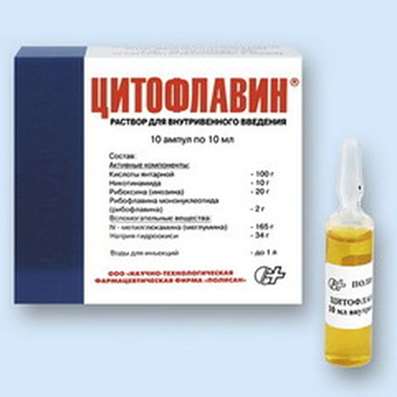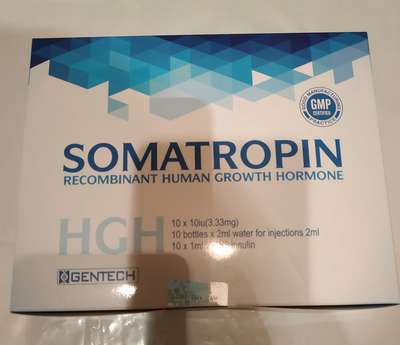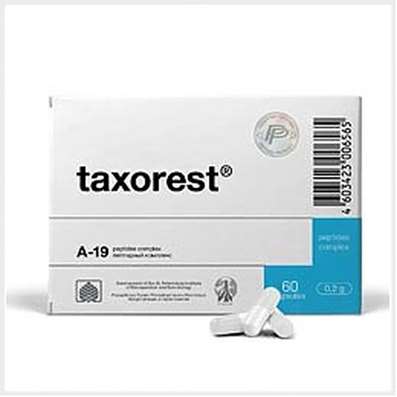Instruction for use: Dextran 70
I want this, give me price
Dosage form: Solution for infusions
Active substance: Dextranum 64000-76000
ATX
B05AA05 Dextran
Pharmacological group
Substitutes for plasma and other blood components
The nosological classification (ICD-10)
A48.3 Toxic shock syndrome: Bacteremic shock; Infectious-toxic shock; Intoxication syndrome; Toxico-infectious shock; Toxic shock; Chronic intoxication in diseases of the digestive tract; Chronic intoxication in gastrointestinal infections; Endotoxin shock
D65 Disseminated intravascular coagulation [defibrillation syndrome]: DIC syndrome; Intravascular coagulation; Hyperfibrinolytic bleeding; Defibrillation Syndrome; Hyperfibrinolytic bleeding; Hyperfibrinolytic bleeding post-traumatic; Hypocoagulant phase of DIC syndrome; Convolation of intravascular disseminated; The syndrome of disseminated intravascular ; Defibrinization syndrome; Coagulopathies acquired
I63 Cerebral infarction: ischemic Stroke; Ischemic brain disease; Ischemic stroke; Ischemic stroke and its consequences; Ischemic cerebral stroke; Ischemic cerebrovascular accident; Ischemic brain damage; Ischemic brain damage; ischemic conditions; Cerebral ischemia; Acute hypoxia brain; Acute cerebral ischemia; Acute ischemic cerebrovascular accident; Acute cerebral infarction; Acute ischemic stroke; Acute period of ischemic stroke; Focal cerebral ischemia; Ischemic stroke; recurrent stroke; The syndrome of Morgagni-Adams-Stokes; Chronic cerebral ischemia; cerebrovascular stroke; embolic stroke; Ischemic brain damage
I74.9 Embolism and thrombosis of unspecified arteries: Arterial embolism; Arterial thrombosis; Acute arterial thromboembolism; Acute vascular occlusion; Acute occlusion of arteries; Acute arterial thrombosis; Acute thrombosis; Acute thrombosis of peripheral arteries; Thrombosis; Thrombosis in the extracorporeal circulation; Thrombosis of peripheral arteries; Peripheral vascular thrombosis; Shunttromboz; Embolism; Embolism of peripheral arteries; Occlusive Arterial Disease
I82.9 Embolism and thrombosis of unspecified vein: Venous embolism; Venous thrombosis; Diseases caused by blood clots in the vessels; Acute vascular occlusion; Acute venous thrombosis; Acute thrombosis of veins; Thrombosis; Thromboembolism; Phlebothrombosis; Embolism
I99 Other and unspecified disorders of the circulatory system: angiopathy; Arterial angiopathy; Atherosclerotic angiopathy; Hemodynamic right heart defects; Hemodynamic defect of the right heart; coronary angiopathy; Infringement of blood circulation; Violation of circulation; Violation microcirculation in organs and tissues; Peripheral circulatory disorders; Disorders of the peripheral circulation in the extremities; circulatory failure; Hemodynamic instability occlusion of arteriovenous origin; Acute circulatory failure; Psevdostenokardicheskie state; Psevdostenokardicheskoe disorder; circulatory disorder; Cardiovascular diseases; Vascular insufficiency; Thrombosis arteriovenous shunt; Thrombosis with prosthetic heart valves; Deterioration of blood circulation in the pelvic organs; Functional failure of the cardiovascular system; Functional disorders of the cardiovascular system; Chronic arterial insufficiency; Chronic heart failure; Age-related vascular disease; The risk of thrombosis
O08.3 shock caused by abortion, ectopic and molar pregnancy
O75.1 Mother shock during delivery or after childbirth and delivery
R57.8.0 * Burn shock: Pain shock for burns; Burn shock
T79.4 Traumatic shock: Haemorrhagic shock; Crash Syndrome; Posthemorrhagic shock; Postoperative shock; Post-traumatic shock; Post-traumatic shock; Traumatic shock; Syndrome of hemorrhagic shock and encephalopathy
Z100 * CLASS XXII Surgical practice: Abdominal surgery; adenomectomy; Amputation; Coronary angioplasty; Angioplasty of the carotid arteries; Antiseptic skin treatment for wounds; Antiseptic Hand; Appendectomy; atherectomy; Balloon coronary angioplasty; Vaginal hysterectomy; The coronary bypass; Interventions in the vagina and cervix; Interventions on the bladder; Intervention in the mouth; Restoration and reconstructive surgery; Hand hygiene of medical personnel; Gynecologic surgery; Gynecological intervention; Gynecological surgery; Hypovolemic shock during operations; Disinfection of purulent wounds; Disinfection of wounds edges; Diagnostic intervention; Diagnostic procedures; Cervical Diathermocoagulation; Long-surgery; Replacing the fistula catheters; Infection in orthopedic surgery; Artificial heart valve; cystectomy; Short-term outpatient surgery; Short-term operation; Short surgical procedures; Krikotireotomiya; Blood loss during surgery; Bleeding during surgery and in the postoperative period; Kuldotsentez; laser photocoagulation; laser coagulation; retinal laser coagulation; Laparoscopy; Laparoscopy in Gynecology; CSF fistula; Small gynecological operations; Small surgical procedures; Mastectomy and subsequent plastic; mediastinotomy; Microsurgical operations on the ear; Mukogingivalnye operation; suturing; Minor surgery; neurosurgical operation; Immobilization of the eyeball in ophthalmic surgery; testectomy; pancreatectomy; Perikardektomiya; The period of rehabilitation after surgery; The period of convalescence after surgery; Percutaneous transluminal coronary angioplasty; Pleural thoracentesis; Pneumonia postoperative and posttraumatic; Preparation for surgical procedures; Preparation for surgery; Preparation of the surgeon's hands before surgery; Preparation of the colon for surgical procedures; Postoperative aspiration pneumonia in neurosurgical and thoracic surgery; Postoperative nausea; Postoperative bleeding; postoperative granuloma; postoperative shock; The early postoperative period; myocardial revascularization; Radiectomy; gastric Resection; bowel resection; uterine Resection; liver Resection; enterectomy; Resection of part of the stomach; Reocclusion of the operated vessel; Bonding tissues during surgical procedures; Removal of sutures; Condition after eye surgery; Condition after surgery; Condition after surgery in the nasal cavity; Condition after gastrectomy; Status after resection of the small intestine; Condition after tonsillectomy; Condition after removal of the duodenum; Condition after phlebectomy; Vascular surgery; Splenectomy; Sterilization of surgical instruments; Sterilization of surgical instruments; sternotomy; Dental surgery; Dental intervention in periodontal tissues; strumectomy; Tonsillectomy; Thoracic surgery; Thoracic surgery; total gastrectomy; Transdermal intravascular coronary angioplasty; Transurethral resection; Turbinektomiya; Removal of a tooth; cataract surgery; Removal of cysts; tonsillectomy; Removal of fibroids; Removing the mobile primary teeth; Removing polyps; Removing broken tooth; Removal of the uterus body; Removal of sutures; Fistula likvoroprovodyaschih ways; Frontoetmoidogaymorotomiya; Surgical infection; Surgical treatment of chronic limb ulcers; Surgery; The surgery in the anal area; The surgery on the colon; Surgical practice; The surgical procedure; Surgical interventions; Surgery on the gastrointestinal tract; Surgical procedures on the urinary tract; Surgical procedures on the urinary system; Surgical intervention of the genitourinary system; Surgical procedures on the heart; Surgical manipulation; surgery; Surgery on the veins; Surgical intervention; Vascular surgery; Surgical treatment of thrombosis; Surgery; cholecystectomy; Partial gastric resection; hysterectomy; Percutaneous transluminal coronary angioplasty; Percutaneous transluminal angioplasty; Coronary artery bypass; tooth Extirpation; Extirpation of milk teeth; pulpectomy; pulsative cardiopulmonary bypass; tooth Extraction; teeth Extraction; cataract extraction; Electrocoagulation; endourological intervention; episiotomy; Etmoidotomiya; Complications after tooth extraction
Composition
Solution for infusion 1 liter
active substance:Dextran 70000 60 g
Auxiliary substances: sodium chloride - 9 g; Water for injection - up to 1 liter
Description of dosage form
Transparent colorless or slightly yellowish liquid.
Pharmachologic effect
Mode of action - plazmozameshchath.
Pharmacodynamics
The blood substitute, hyperosmotic solution (osmolarity - 0,34-0,37 mmol / kg). It has plazmozameshchath, antishock and antiplatelet effect. Due to the high osmotic pressure, which exceeds 2.5 times the oncotic pressure of plasma proteins, it causes active involvement of tissue fluid (20-25 ml per 1 g of polymer) and retains it in the vascular bed for a sufficiently long period. It eliminates disorders of systemic hemodynamics and restores bcc, increases blood pressure, stroke and minute volumes of blood, removes spasm of peripheral vessels.
It improves blood rheology, reduces its viscosity, has a pronounced anti-adhesive and antiplatelet effects on platelets, promotes the elimination of peripheral stasis and aggregation of red blood cells leads to activation of microcirculation and enhance tissue blood flow.
Infusion of the drug reduces the risk of disseminated intravascular coagulation (DIC).
Pharmacokinetics
It is excreted from the body, mainly by the kidneys. Within the first 24 hours, about 50% is eliminated, and after 3 days only trace concentrations are determined in the blood. A small part accumulates in the reticuloendothelial system, where it is gradually cleaved with dextranases (acidic alpha-glucosidase) to dextrose (not a source of carbohydrate nutrition).
Indications of the drug Dextran 70
Violation of hemodynamics;
Propensity to thrombosis in surgical interventions and conservative treatment of conditions accompanied by a syndrome of increased viscosity and thickening of the blood;
Restoration of rheological properties of blood;
thrombosis;
Prevention of disseminated intravascular coagulation syndrome;
Prevention and treatment: shock conditions (developed as a result of acute blood loss, including during childbirth, ectopic pregnancy, trauma, combined lesions, intoxication and sepsis), surgical and burn shock;
ischemic stroke;
Addition to the perfusion fluid when using apparatus of artificial circulation.
Contraindications
Hypersensitivity to the components that make up the drug;
Cardiovascular failure;
Continuing internal bleeding;
traumatic brain injury;
Intracranial hypertension;
Hemorrhagic stroke;
Anuria;
thrombocytopenia;
Clinical situations in which the introduction of large volumes of liquids is undesirable (including arterial hypertension, hyperkalaemia against a background of hematocrit less than 0.3);
Severe chronic renal failure.
With caution: pronounced dehydration; Patients with diabetes mellitus with severe hyperglycemia and hyperosmolarity.
Pregnancy and breast-feeding
Perhaps appointment for life indications, if the intended benefit for the mother exceeds the potential risk to the fetus.
Side effects
Allergic reactions (hyperemia and skin itching, angioedema), anaphylactoid reactions, fever, chills, fever, nausea; Can provoke bleeding, the development of acute renal failure.
Interaction
It is necessary to check in advance for compatibility with drugs that are planned for introduction into the infusion solution.
Dosing and Administration
IV by drop infusion, with acute blood loss - intraarterial (in a hospital).
The volume and speed of drug administration is determined by the patient's condition, blood pressure, heart rate, and hematocrit.
Before the transfusion, a biological test is performed: after the administration of 5-10 drops, a 3-minute break is made, then another 10-15 drops are poured and after another break, in the absence of symptoms (rapidity of the pulse, decrease in blood pressure, skin hyperemia, difficulty breathing) continue to be transfused.
With the development of shock or acute blood loss - the drug is injected intravenously, 0.4-2 l (5-25 ml / kg). After raising blood pressure to 80-90 mm Hg. Art. Usually go to the drip introduction at a rate of 3-3.5 ml / min (60-80 drops / min). Possible in / a mode of administration (in the same dosages). Infusion of the drug should be carried out under constant control of the main indicators of systemic hemodynamics. With a significant increase in central venous pressure, reduce the dose and rate of administration or completely stop the infusion.
When blood loss is more than 500-750 ml, Dextran 70 is combined with blood transfusion, erythrocytic mass or red blood cell suspension necessary to eliminate tissue hypoxia, as well as fresh frozen plasma containing factors of the hemostasis system.
To prevent operational blood loss, as well as to achieve artificial hemodilution, prevent thrombosis and reduce the tendency to develop or progress the DIC syndrome, the drug is administered in doses of 5-10 ml / kg of body weight (children - 10-15 ml / kg) for 30- 60 minutes before surgery (in the case of a significant decrease in blood pressure, they switch to jet injection, with a decrease in blood pressure below 60 mm Hg - in / a). The volume of infusion during surgery is determined by the magnitude of operational blood loss (hematocrit should not fall below 0.3).
In the postoperative period, drip-drop introduction is an effective method of shock prevention.
When burn shock: the first 24 hours in 2.3 liters administered in the following 24 hours - 1.5 liter. Children in the first 24 h - 40-50 ml / kg, the next day - 30 ml / kg. At extensive and deep burns combined with the introduction of plasma, albumin, gamma globulin; with burns over 30-40% of the body surface - with a blood transfusion. recommended infusion of the drug to prevent possible dehydration fabrics combined with the introduction of crystalloid solutions in share ratio of 1: 2.
Overdose
With the rapid introduction of dextrans in large amounts can trigger the development of acute left ventricular failure and pulmonary edema.
In case of complaints of chest tightness, shortness of breath, back pain, as well as the appearance of fever, cyanosis, circulatory disorders and respiratory infusion should be stopped, in / introduce 10 ml of a 10% solution of calcium chloride, 20 ml of 40% solution dextrose, antihistamines, corticosteroids and have the appropriate symptomatic therapy.
Special instructions
The drug can withstand freezing and can be transported at a temperature of minus 10 ° C. Freezing of the solution is not a contraindication to its use, provided that the packaging remains hermetically sealed.
Patients with severe dehydration require pre fluid deficit reduction to dextran injection, the rate of administration should not exceed 500 mL / h.
The introduction of the recommended dose has virtually no effect on the hemostatic system. Exceeding the recommended dose may prolong bleeding time. Against the background of dextrans induced hemodilution, a decrease in protein and hemoglobin concentration in the plasma is possible. The amount of dextrans to be administered should be calculated in such a way that the hemoglobin level does not decrease below 90 g / l (hematocrit 27%) for a more or less prolonged time.
The introduction of dextrans does not prevent the determination of the blood group and the conduct of a cross-sample by standard methods (dextrans are able to envelop the surface of erythrocytes, preventing the determination of the blood group, so it is necessary to use erythrocytes washed with 0.9% sodium chloride solution before the study).
The presence in the blood of dextran can affect the results of the enzymatic methods based on papain.
In the study of blood glucose using solutions of sulfuric acid and acetic acid can be obtained glucose concentration greater than it actually is (the latter can hydrolyze dextran).
It is recommended to take a blood sample to determine the concentration of bilirubin and protein prior to administration of dextran.
Release form
Solution for infusions 6%.
For 200, 400 ml in bottles of glass with a capacity of 250, 450 or 500 ml. Each bottle is placed in a pack of cardboard box.
24 bottles of 200 ml or 12 bottles of 400 ml in packs are packed in a box of corrugated cardboard.
For the hospital: 24 bottles of 200 ml, 12 bottles of 400 ml without packets are placed in a box of corrugated cardboard.
Manufacturer
OJSC "Kraspharma".
660042, Krasnoyarsk.
Conditions of supply of pharmacies
On prescription.
Storage conditions of the drug Dextran 70
At a temperature not exceeding 25 ° C. (Allowed to freeze during transport).
Keep out of the reach of children.
The shelf life of the drug Dextran 70
2 years.
Do not use beyond the expiration date printed on the package.

 Cart
Cart





